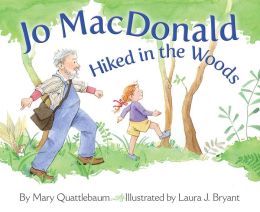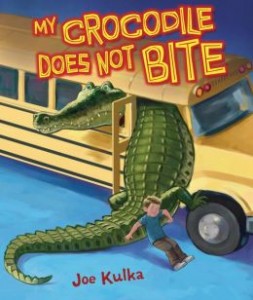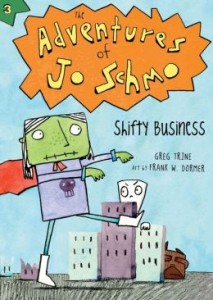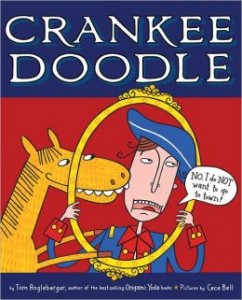Written by Tim Egan
Buy on Amazon
Dodsworth in Tokyo is the newest installment in Tim Egan’s series about two characters, Dodsworth and a duck, traveling around the globe. Egan introduced readers to Dodsworth in The Pink Refrigerator, and though many fans consider the character of Dodsworth to be a mouse, the author himself is unsure. In an interview with Entertainment Weekly that can be found online, Tim Egan said, “I think he’s a mouse. I’ll never declare it.”
Whatever animal Dodsworth happens to be, he’s a delight in each of his books as he travels with his companion, a misbehaving duck. Prior to traveling to Tokyo, Dodsworth and the duck visited New York, Paris, London, and Rome in other books of similar names.
In the adventure in Tokyo, late first grade or second grade readers will delight and giggle as the duck bumps into a rickshaw while busily looking at the signs along the crowded street, and falls into a koi pond. The duck has to be rescued by Dodsworth. Who knew a duck couldn’t swim? This in turn, causes a lady to send a tray of wagashi (Japanese desserts) flying through the air. But the duck redeems himself by returning a little girl’s favorite toy, a kendama.
Author Tim Egan succeeds effortlessly in teaching readers about Japanese culture and introducing Japanese words, like, arigato, rickshaw, bonsai trees, karate, kendama, wagashi, sumi-e paintings, Zen temple, Taiko drummers, and sushi.
Because some of the words do not follow phonetic rules, this book would be best for skilled first or second grade readers if the children are reading the book alone. Even skilled readers may need pronunciation help with many of the words. However, this book would make an excellent addition to a geography lesson about Japan, as a read aloud by the teacher. A class might enjoy reading the Dodsworth books in order of completion, with a world map displayed on a board. Place flags on the map of the various places Dodsworth visits and encourage the kids to learn to recognize the cities and countries Dodsworth and his misbehaving duck visit.
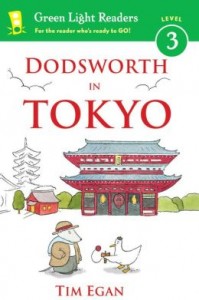 TITLE: Dodsworth in Tokyo
TITLE: Dodsworth in Tokyo- AUTHOR: Tim Egan
- PUBLISHER: Houghton Mifflin Books for Children/ Houghton Mifflin Harcourt
- REVIEWER: Julie Lavender
- FORMAT: Hard Cover, 48 pages
- ISBN: 978-0-547-87745-7
- GENRE: Humor
- LEXILE: 400


